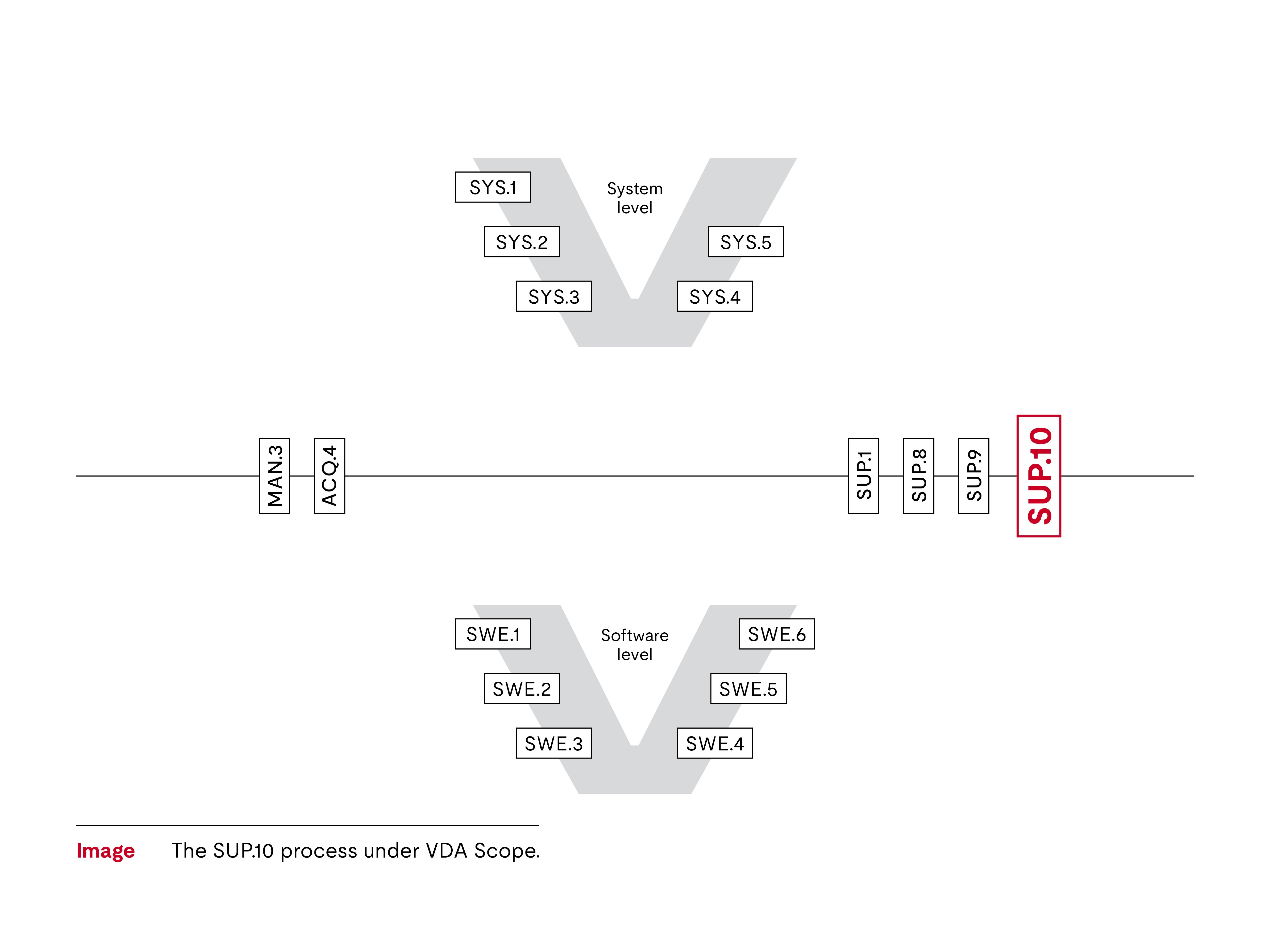
Process ID: SUP.10
Process group: Support
Automotive SPICE® is a trademark of VDA QMC.

A change request is when someone proposes a change to a project’s scope or requirements. Chargeable changes present opportunities for more work in the project (that will be charged and therefore more revenue to the project) and personnel capacity. Processing change requests quickly and effectively also contributes to customer satisfaction.
The Automotive SPICE® Change Request Management process (SUP.10) can help your organization manage, track and implement change requests.
In this article, we discuss the most important aspects of the change request management process in Automotive SPICE®.
Important aspects of the Automotive SPICE Change Request Management process (SUP.10)
Define an effective change request management strategy
Change requests need to be processed through all engineering processes, involving dozens of people across different teams and locations, without getting stuck along the way. Change requests may not get properly implemented if you don't coordinate these people and track the status of change requests as they flow through the different steps. Even though required for CL2 (GP 2.1.1), an effective change request management strategy defined from the start of the project makes the workflow, progress tracking and responsibilities clear to everyone involved.
To establish an effective change request management strategy:
- Define the categories of change requests to be dealt with, such as chargeable change. requests, nonchargeable change requests, system-level change requests and software requests.
- Define your input channels — who can submit change requests.
- Define the tools to be used to process change requests.
- Define the status that change requests will have during processing.
- Define how and by whom progress will be tracked. For example, a change control board (CCB) is a group of people who review and prioritize requests for changes in a project and decide whether to implement them.
Analyze and approve change requests
By proceeding with implementation of the change requests without first analyzing them, you may miss out on financial compensation or overburden your project team. To avoid these problems, we recommend that the CCB:
- Check whether this change request is chargeable and, if so, whether the person who submitted the change request is permitted to do so.
- Change requests often require a more detailed feasibility analysis. If change requests are chargeable, estimate the effort, prepare a quote and negotiate with the customer.
- Check whether the desired implementation date is realistic to help prevent endangering the previously agreed releases and their contents. This helps you maintain your reliability to the customer and other stakeholders.
Implement change requests
Implementing change requests increases the workload of your team and therefore requires careful planning and monitoring. Because change requests and normal development tasks compete for resources and delivery dates, implementing change tasks without proper planning can cause either the change requests or the normal development tasks to get pushed to future releases or be late.
If you do not have sufficient buffers or cannot increase staff capacity, your options are:
- Move features to a later release.
- Move bug fixes and gain more capacity for the change request.
To avoid customer dissatisfaction, negotiate the options with the customer in advance. After this is resolved, treat the change requests like any other development task.
Automotive SPICE® requires that change requests are traceable to all affected work products. This can be done with a life cycle management tool linked to your configuration management tool. A change request leads to a series of development tasks, and each development task is traceable to all resulting changes to work products.
Defining a change request management strategy and analyzing change requests before implementing them can help you to:
- Implement powerful change request management functionality.
- Keep control of releases.
- Prevent customer dissatisfaction.
Why choose UL Solutions Software Intensive Systems for Automotive SPICE® support?
UL Solutions Software Intensive Systems can support automotive original equipment manufacturers (OEMs) and suppliers in:
- Achieving the required capability levels within key development processes.
- Systematically improving existing workflows and methods.
- Evaluating the status of process improvements through formal assessments and gap analysis.
- Fulfilling the requirements of Automotive SPICE® in harmony with security, functional safety and agile methods.
- Training staff and assessors.
Learn more about the Automotive SPICE® change request management process
Interested in deepening your understanding of the Automotive SPICE® Change Request Management process (SUP.10) from the recommended VDA Scope? Watch our video.
Get connected with our team
Thanks for your interest in our products and services. Let's collect some information so we can connect you with the right person.
